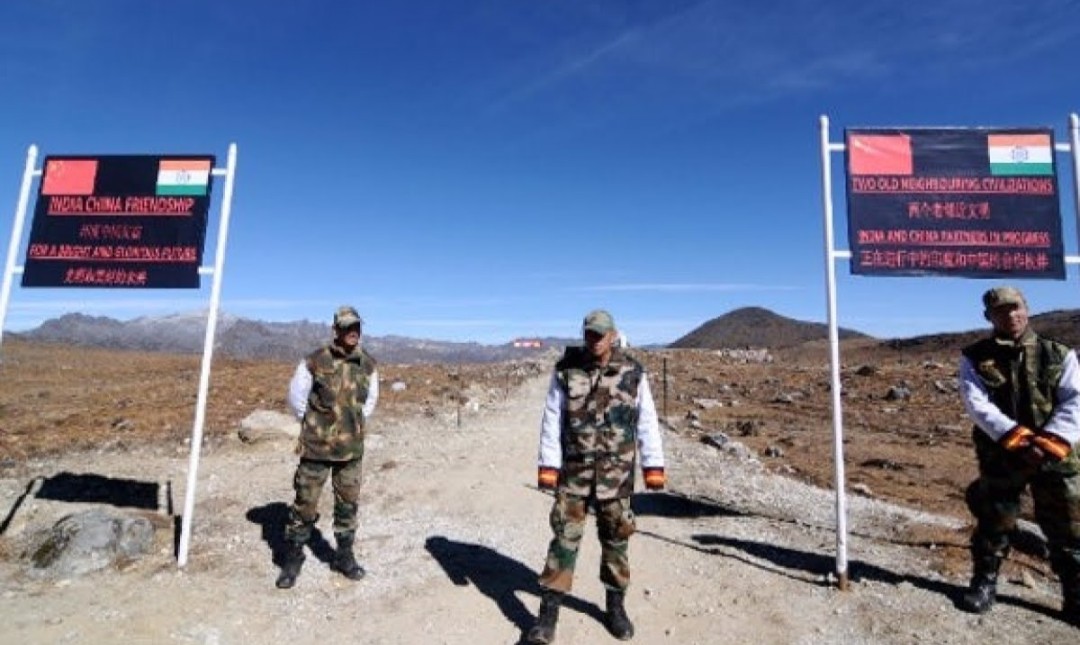Response from Ministry of External Affairs is awaited
China has accused the Indian army of crossing into its territory and “blocking” its patrols and “attempting to unilaterally change the status” on the Line of Actual Control (LAC) between the two countries in Sikkim.
The strongly worded statement made available to the media by the Chinese Ministry of Foreign Affairs marks an escalation in the current tensions at the LAC between them and threatens to bring what the Indian government has thus far maintained were “actions by both armies on the ground” into a diplomatic face-off between the countries, the most serious such event since the Doklam face-off in 2017.
In the statement released on Tuesday in Chinese, the MFA in Beijing referred to the recent skirmish in Sikkim, claiming that “the Indian army has crossed the line across the western section of the Sino-Indian border and the Sikkim section to enter Chinese territory”.
The statement added that the Chinese side had taken up the matter with India, asking the Indian side to “immediately withdraw the personnel across the line, restore the status quo of the relevant areas, strictly restrict the frontline troops, observe the important consensus reached by the leaders of the two countries and the agreements signed by the two sides, and jointly maintain peace and stability in the border areas.”
A response from the Ministry of External Affairs is awaited.
Sikkim’s Naku La pass is one of four areas that have seen aggressive action between Chinese and Indian troops (including Army and Indo-Tibetan Border Patrol personnel) since mid-April this year, according to sources.
Similar skirmishes, including jostling, and fisticuffs between the soldiers have been reported along a stretch in Eastern Ladakh at three points of Pangong Tso lake, the Galwan river nalah, and Langmarpo Zam, the sources said, adding that both sides have rushed more personnel to the area and more than a dozen new Chinese boats had been observed on the lake.
Officially, the army said there were two incidents of face-off between troops of India and China, on May 5 near Pangong Tso in Eastern Ladakh and a second face-off on May 9 at Naku La in north Sikkim. The incidents were marked by “aggressive behaviour by both sides,” which resulted in minor injuries to troops, after which both sides disengaged after dialogue and interaction at local level, Indian Army officials said.
However, an article by the Global Times on May 18, quoting Chinese military sources, also spoke of an incident along the “boundary line in the Galwan Valley region,” claiming Indian troops had entered “Chinese territory.” It stated that the Indian side had built defence fortifications and obstacles to prevent patrolling by Chinese troops and “attempted to unilaterally change the current border control situation.” Sources in New Delhi have denied the claim and indicated that the blame lay with Chinese troops trying to disrupt the construction of a road close to the LAC in Eastern Ladakh.
“Temporary and short duration face-offs between border guarding troops do occur along the LAC due to the differing perceptions of the alignment of boundaries that are not resolved,” Army chief Gen. Manoj Naravane said last week in a statement, adding that “development of infrastructure capabilities along our Northern borders is on track.”
The Army chief also denied that the separate incidents in eastern Ladakh and western Sikkim, a distance that spans 1,200 km along the LAC, were “co-related” in any way.
In a statement last Thursday, MEA spokesperson Anurag Srivastava had said India and China attach “utmost importance to ensuring peace and tranquillity in all areas of Sino-India border regions” and referred to agreements between Prime Minister Narendra Modi and Chinese President Xi Jinping in their two informal summits.
“Occasionally, however, on account of differences in perception of the alignment of the LAC, situations have arisen on the ground that could have been avoided if we had a common perception,” he had said, when asked.
With inputs from Ananth Krishnan; The Hindu

